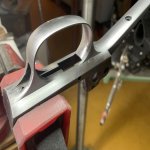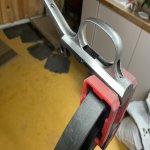Depending where you are starting on use of a file - is dozens of them - is not "one" file - most all have teeth that are sharp going one way - push and make it cut going that way - lift it more or less right off the work to come back - do not drag the teeth backwards across the work piece - that will simply dull or bend over those teeth and it won't cut. Is also helpful to use chalk and a file brush to keep those file teeth clean - they will cut much nicer - very nasty to get a chunk of crud stuck in the teeth that make a gouge in the work piece. Expect to take weeks or months of practice to file something dead flat - most of the time, we "rock" the file on the stroke - taking more off at near end and at far end of the work piece - leaving a "hump". Some files will have a safe "face" or safe "edge" - no teeth - they will not cut in that direction. If you are trying to file a sharp inside corner, then need a file with teeth shaped like that, or use some "safe" edged files to get in there.
Not sure if I have done it, but likely did - I never have owned a milling machine - so was a thing at one time to use a sharp, cold chisel to tap and slice out metal when initially re-shaping something.
Your best chance at getting a good filing job is to get the work piece securely held in something - like a vise - and use both your hands to file - will be VERY hard to make a nice job holding the work piece in one hand and the file in the other hand, with the assembly on your lap or where-ever. Sometimes have to come up with a holding jig - I have one that I bolt a Mauser receiver to - then the bench vise grabs that jig - holds the receiver very rigid, but no risk of marking or crushing the receiver with the vise - and both hands free to file on that receiver.











































































